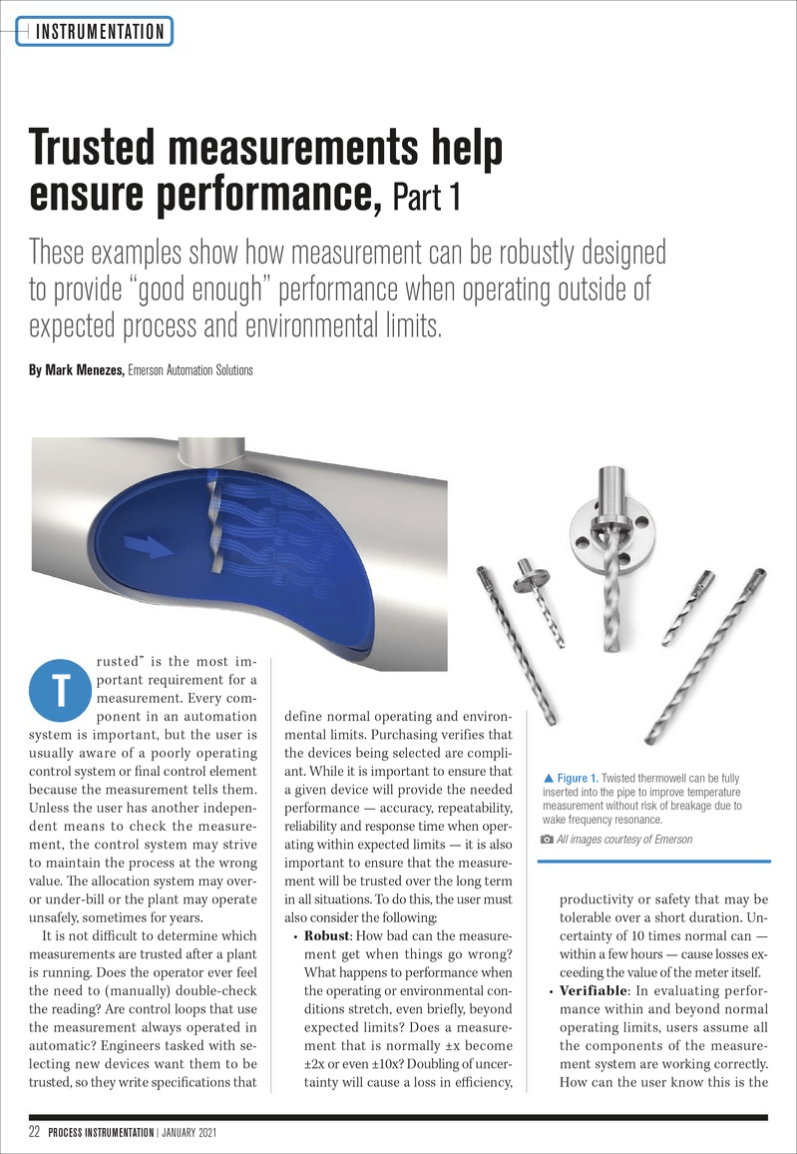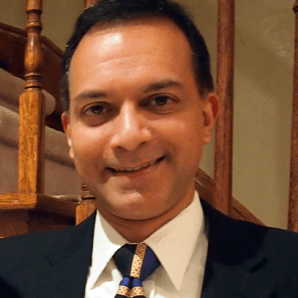 Your manufacturing and production processes are filled with sensors to measure the current operating conditions. But, can you trust these measurements? In a Process Instrumentation article, Trusted measurements help ensure performance, part 1, Emerson’s Mark Menezes shares examples of how measurements, “…can be robustly designed to provide ‘good enough’ performance when operating outside of expected process and environmental limits.”
Your manufacturing and production processes are filled with sensors to measure the current operating conditions. But, can you trust these measurements? In a Process Instrumentation article, Trusted measurements help ensure performance, part 1, Emerson’s Mark Menezes shares examples of how measurements, “…can be robustly designed to provide ‘good enough’ performance when operating outside of expected process and environmental limits.”
Mark opens noting that while:
…it is important to ensure that a given device will provide the needed performance — accuracy, repeatability, reliability and response time when operating within expected limits — it is also important to ensure that the measurement will be trusted over the long term in all situations.
Two considerations for trusting the measurements include that they be robust and verifiable.
On robustness:
How bad can the measurement get when things go wrong? What happens to performance when the operating or environmental conditions stretch, even briefly, beyond expected limits? Does a measurement that is normally ±x become ±2x or even ±10x? Doubling of uncertainty will cause a loss in efficiency, productivity or safety that may be tolerable over a short duration. Uncertainty of 10 times normal can — within a few hours — cause losses exceeding the value of the meter itself.
On being verifiable:
In evaluating performance within and beyond normal operating limits, users assume all the components of the measurement system are working correctly. How can the user know this is the case so the control, billing or safety system will never rely on a bad measurement? Even better, can the device provide early warning so the failure can be prevented?
For robust measurements:
…identify potential faults and worst-case operating limits, quantify the impact on the measurement certainty and then apply best practice design to ensure “good enough” performance when operating outside of these worst-case limits.
Mark shares several best practice designs to improve robustness. Read the article to see the examples he shares for orifice or other differential pressure (DP) flowmeters, thermowells used in temperature measurement, pressure measurements in low ambient temperature conditions, fluids with changing densities, fluids with gas entrained in liquid flows, high-noise slurry flows, non-contacting liquid level measurements, and flow streams requiring low flow cutoffs.
For example, when using thermowells:
…users rely on the wake frequency calculation (WFC) to ensure that the thermowell will not resonate under normal flowing conditions, which can lead to breakage and loss of containment.
…
Instead, users should install a “twisted” thermowell, fully inserted to the center of the pipe. This design avoids resonance and risk of wake frequency breakage while providing robust temperature measurement over all operating conditions.
If any of these conditions apply in your process, read the article for best practices on “….how a measurement can be robustly designed to provide ‘good enough’ performance when operating outside of expected process and environmental limits.”

